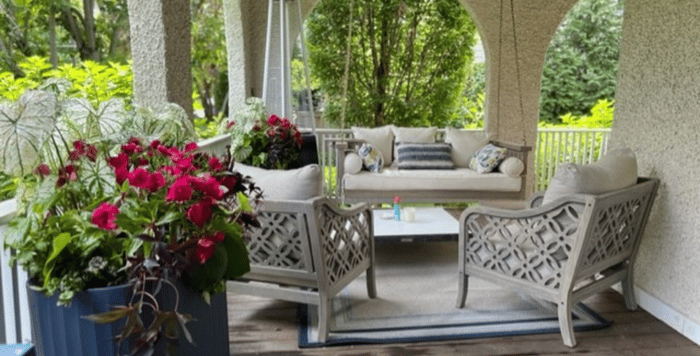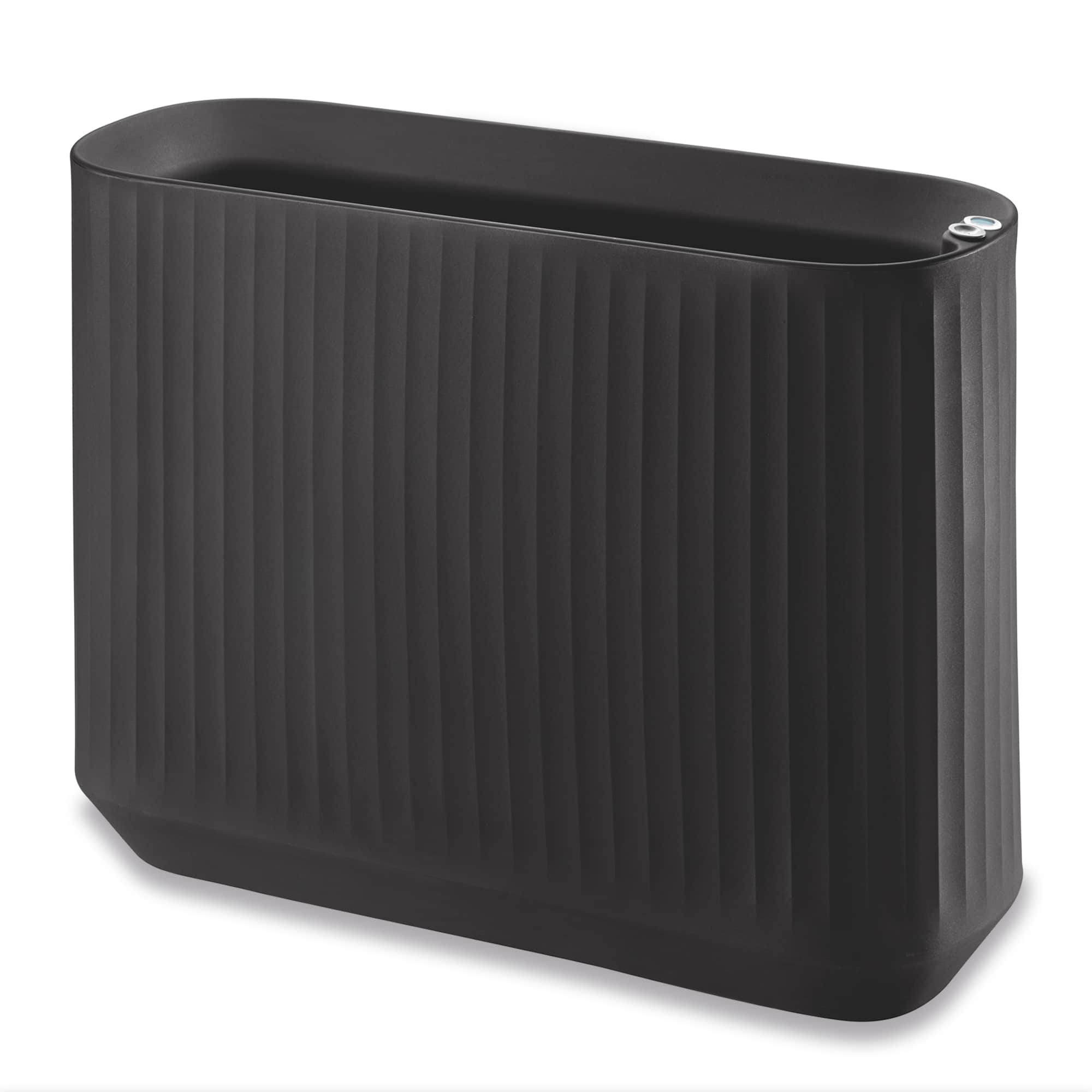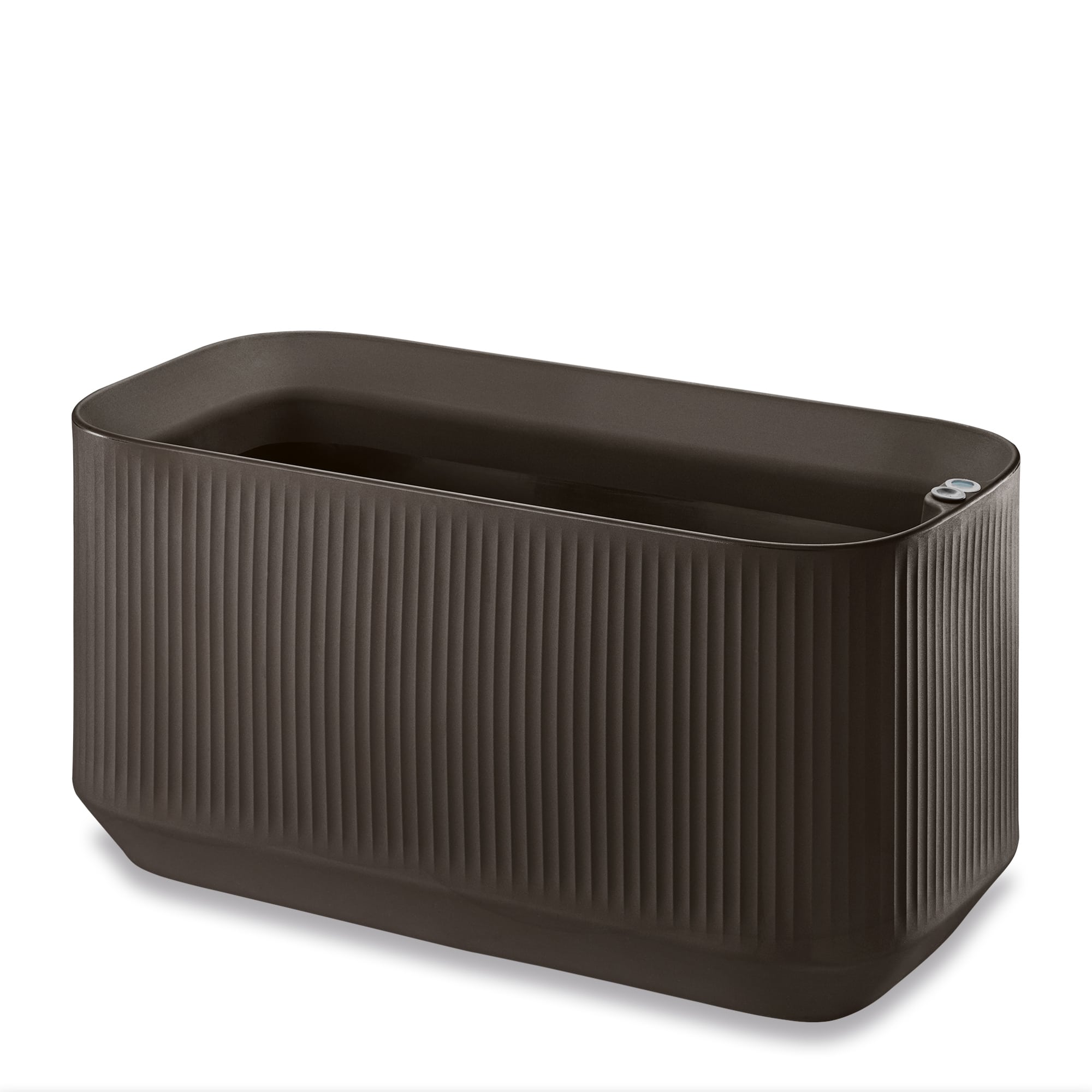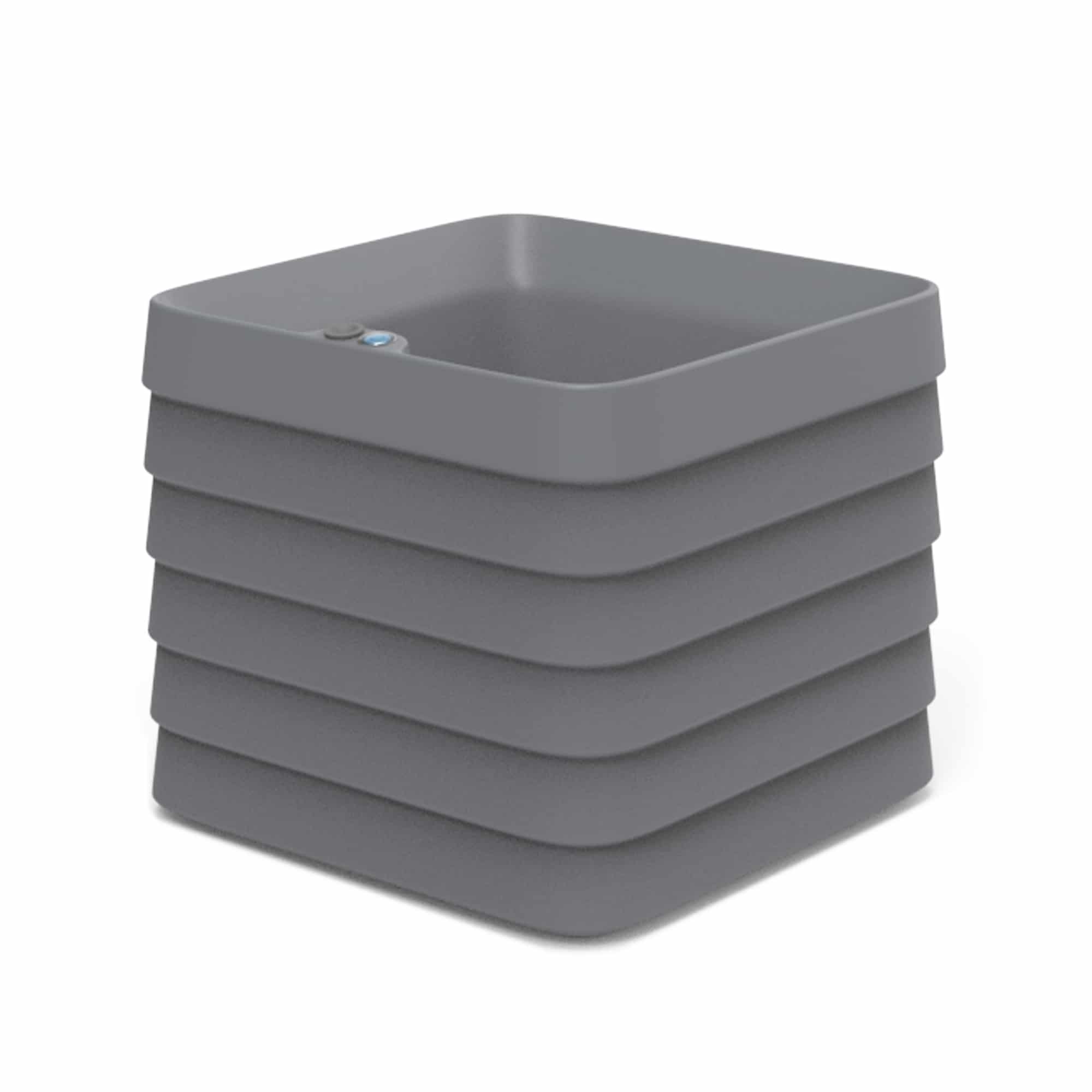It’s not news that we are failing our planet – creating too large of a carbon footprint, depleting natural resources, neglecting biodiversity and wasting water. The effect of this neglect extends well beyond humans – the lack of stewardship disrupts every major ecosystem on the planet. We are left with fewer insects to pollinate plants which means less wildlife and less food for us. We are left with fewer plants to filter the air and water, putting us at risk for environmental illnesses.
So how can we help, even in our tiny corner of the world where we garden? We can take steps that avoid creating excess waste, use more native plants that welcome pollinators, avoid chemicals, recycle plastic pots, harvest water and save seeds to grow our own plants. Little steps that add up to a lot of good when we all commit to doing our part.
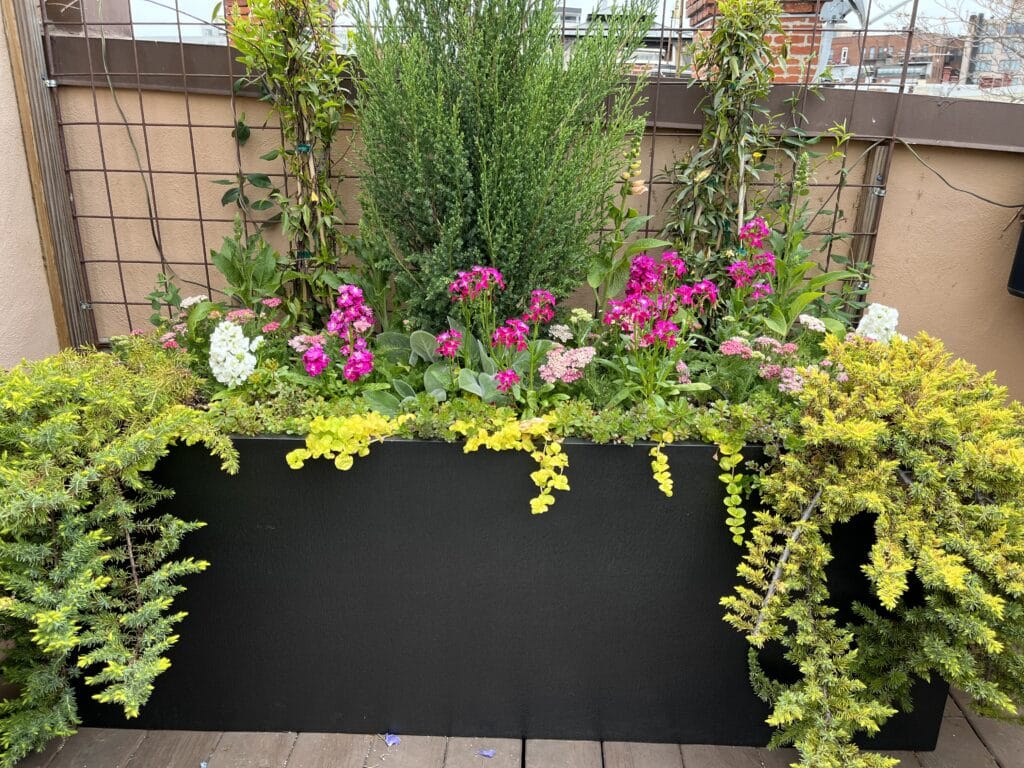
Container gardening is a decorative and environmentally friendly addition to any home.
Recently, legislation surrounding water conservation legislation has been passed in parts of of Southern California, Arizona, Texas, and other states. Sooner or later, we all will be faced with limitations on the natural resources that we often take for granted so let’s figure out how to make these sacrifices beautiful. Container gardening is one way that we can welcome beauty into outdoor spaces, feed the pollinators, compost & grow our own plants, avoid chemicals and welcome biodiversity, no matter the size of your space. Self-watering planters do an even better job of conserving water by providing the plants with exactly what they need and only removing water when it risks harming the plants.
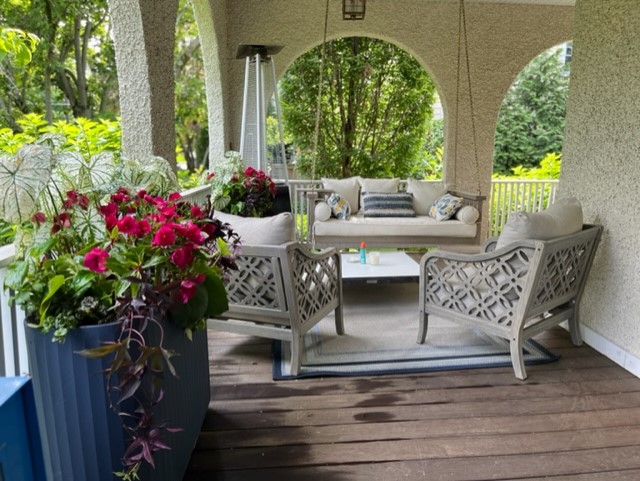
Self-watering planters save you gallons in water every year.
But the plant material we choose is one of the easiest and most important ways we can avoid waste. Creating sustainable container gardens, much like gardens in the landscape, that rely on the stability of evergreen trees and perennials plants, mean less waste for the earth. Incorporating drought tolerant plants that require less water also mean less maintenance for homeowners as well. Taking the time to learn about the plants that require less water before planting your garden can help to significantly reduce water consumption now and in the future as established perennials and shrubs require less water than newly planted ones.
You can go one step further by committing to using more native plants that feed the pollinators and therefore sustain our ability to grow food. Since these plants are conditioned to grow in your zone, they are usually one and the same.
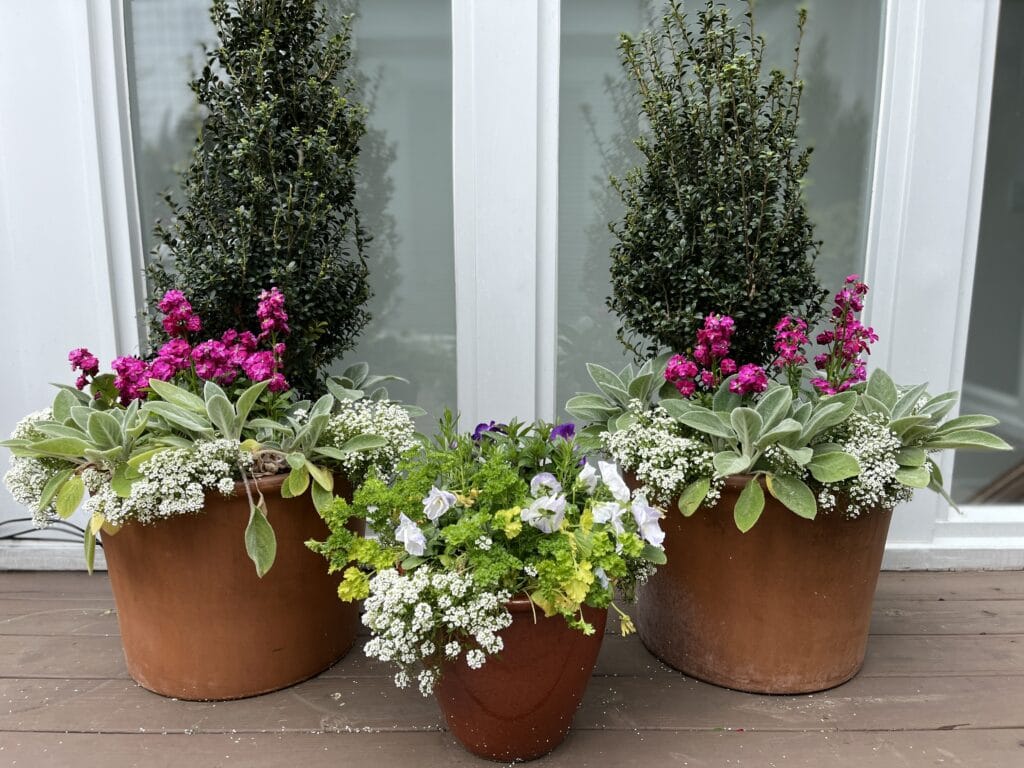
The key to sustainable gardening is to work with your environment, not against it.
Incorporating trees and shrubs into containers adds seasonal beauty and structure to the garden, provide privacy and help to cool an outdoor space, especially in urban rooftops and terraces which tend to be very hardscape heavy. Long-lived perennials that are adapted to your zone can be underplanted – planted around trees and shrubs – and within containers, you can plant smaller knowing they will fill in over time. Many of them can be divided and spread out throughout your containers or shared with neighbors. We always try to select perennials for more than their flowers- foliage from plants like Coral Bells and Autumn Brilliance Ferns add color and texture almost year-round.
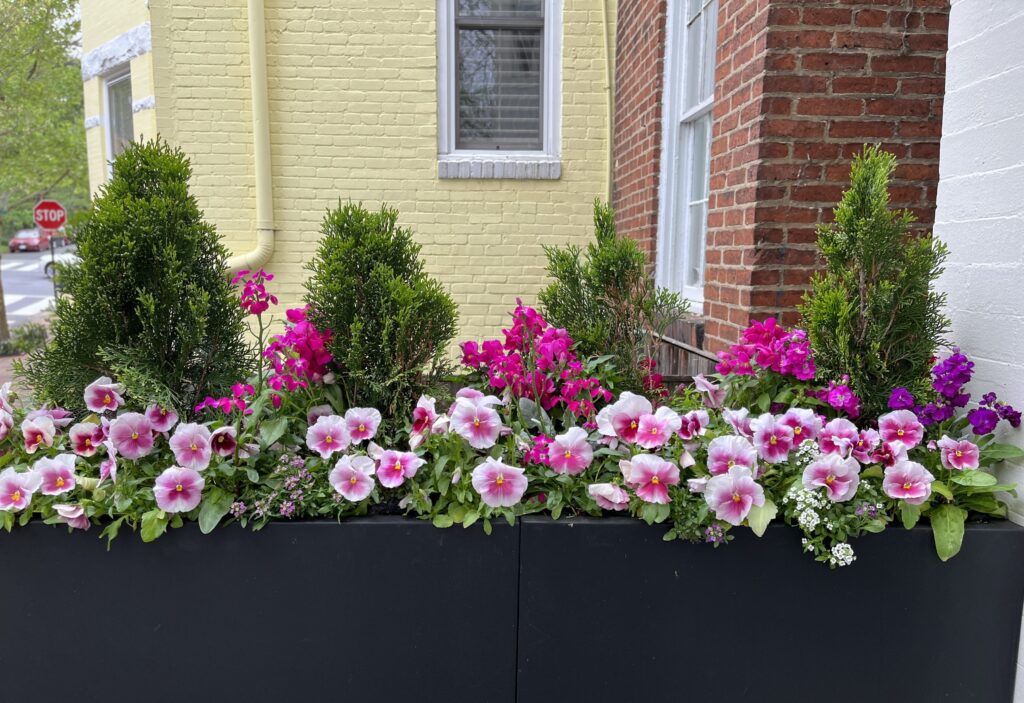
Trees provide privacy and act as a natural cooling system.

Trees and shrubs add beautiful dimension to garden designs.
Setting up a rain barrel properly can serve a few purposes – collecting water that would otherwise carry oil, debris and waste down to our rivers, saving on your water bill and helping to conserve in times of drought.
And when its time to cleanup, be kind by recycling your old plant pots – some nurseries will accept them back to sanitize and re-use or find a friend that grows plants from seed. You would be surprised how a couple flats of empty plant pots left out for recycling in the evening disappear by the next morning!
We all want our gardens to be beautiful and you don’t need to sacrifice to create a lush container garden. Educating yourself, asking professionals for advice or enlisting their services, and committing to preserving the earth is all it takes.
